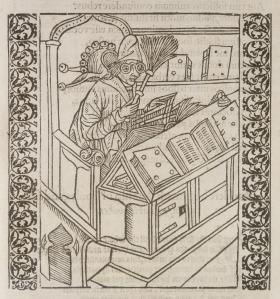My Library and Information Management course was designed for a digital world. Boolean searching and relational databases dominated the curriculum; the only time paper books were mentioned was in a subject on children’s and youth literature. To ground myself in the physical, I practised freehand embroidery between classes and on my commute.
During the final semester of my studies, I stumbled across an exhibition of English embroidery at the National Gallery of Victoria. I wandered past cases full of intricate needlework, the thread still sturdy and vibrant after decades tucked away in linen cabinets and dusty storerooms. The exhibition was the first time I had ever encountered traditional hand embroidery presented as artwork. Seeing these sophisticated textiles up close and curated, I realised that they were as legitimate an art form as any of the paintings on the walls. And yet, caption after caption bore the authorial statement ‘creator unknown’. The textiles had been dismissed as mere women’s work for centuries, and the names of the embroidery artists had been lost to time. Only women from the richest and most renowned families were, sometimes, given the courtesy of attribution.

I was reminded of these ‘creators unknown’ when I first began working with rare books in the Australian Museum Research Library in 2016. My digitally focused degree had not prepared me for the sense of awe I felt when handling a centuries-old book for the first time, the product of so many creators. The labour that went into the pre-industrial book printing trade was immense. Lost are the names of the workers who collected the fibres and mulched the pulp to create paper, the apprentice printers who laid the typeset and ink, or the journeyman craftsmen who assisted in carving the wooden blocks for the illustrations. Only the authors’ and master printers’ names are captured on the title page.
As I spent more time studying early modern woodcuts, my affinity for them grew. With a few carefully placed nicks in a wooden block, a universe of expression and dimension could be added to an image. The stark black ink on laid paper drew a remarkable visual parallel to dark cotton thread on natural, unbleached calico. I decided to try and recreate these images myself with a needle and thread.
My desire to recreate woodcuts in embroidery came from a place of play and curiosity. Several years on, it has evolved into an ongoing artistic practice. Each time I reimagine these illustrations as textile artworks, I strive to honour the creators who came before me and legitimise the artistry of both mediums. As a librarian, an artist, and a bibliophile, I hope I do these unknown creators justice.
Adria Castellucci is a Team Leader in Reader Services. Her exhibition Verbatim was held last year at Disorder Gallery in Darlinghurst.
This story appears in Openbook autumn 2024.

